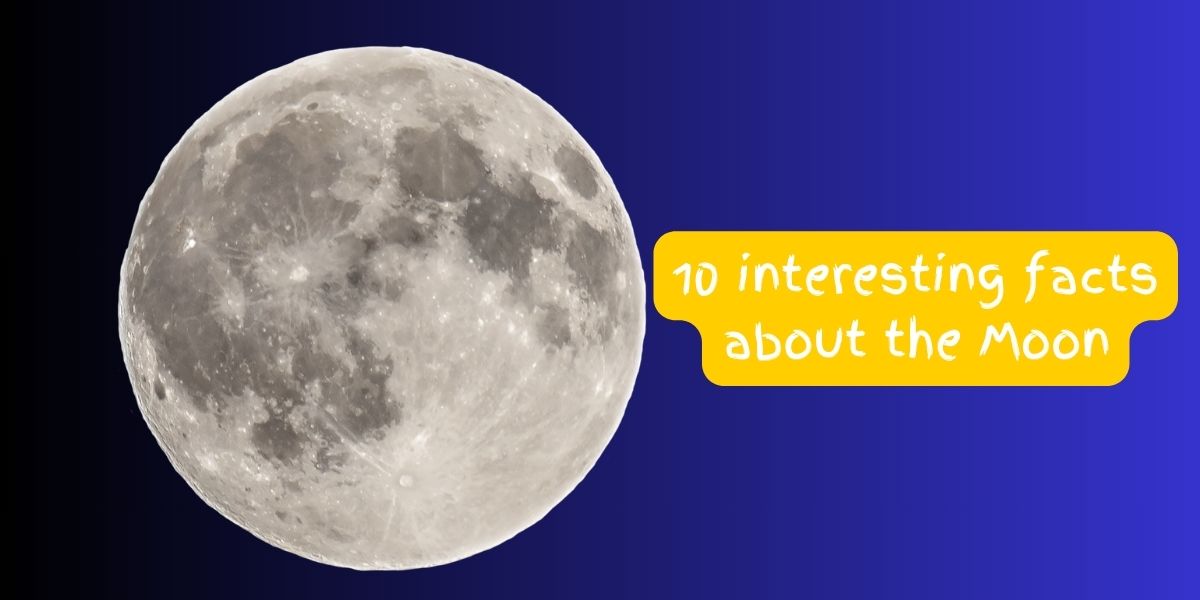Here are 10 interesting facts about the Moon:
- Natural Satellite: The Moon is Earth’s only natural satellite, orbiting around our planet approximately every 27.3 days.
- Closest Celestial Body: It is the fifth largest moon in the Solar System and the closest celestial object to Earth, with an average distance of about 384,400 kilometers (238,900 miles).
- Visible Phases: The Moon goes through distinct phases as it orbits Earth, including New Moon, Crescent, First Quarter, Gibbous, Full Moon, and Last Quarter, as it reflects sunlight from different angles.
- Synchronous Rotation: The Moon is tidally locked to Earth, meaning the same side of the Moon always faces Earth due to its synchronous rotation.
- Lunar Maria: The dark patches on the Moon’s surface are called maria (Latin for “seas”). They are actually ancient volcanic plains filled with solidified basaltic lava.
- Impact Craters: The Moon is heavily cratered, with numerous impact craters caused by collisions with asteroids and meteoroids over billions of years. Some of these craters are visible from Earth without a telescope.
- Gravity Differences: The force of gravity on the Moon’s surface is about one-sixth that of Earth’s, which means objects weigh less on the Moon compared to Earth.
- Temperature Extremes: The Moon experiences extreme temperature variations, ranging from about -173°C (-280°F) during lunar night to about 127°C (260°F) during lunar day.
- Lunar Exploration: The first human landing on the Moon occurred on July 20, 1969, during NASA’s Apollo 11 mission, with astronauts Neil Armstrong and Edwin “Buzz” Aldrin becoming the first humans to walk on the lunar surface.
- Future Exploration: Since the Apollo missions, several countries and space agencies, including NASA, ESA, and China’s CNSA, have launched missions to explore the Moon, with plans for future crewed missions, lunar habitats, and scientific research.
These facts highlight the Moon’s unique characteristics, its importance in scientific exploration, and its influence on Earth’s natural processes and human culture throughout history.


No responses yet